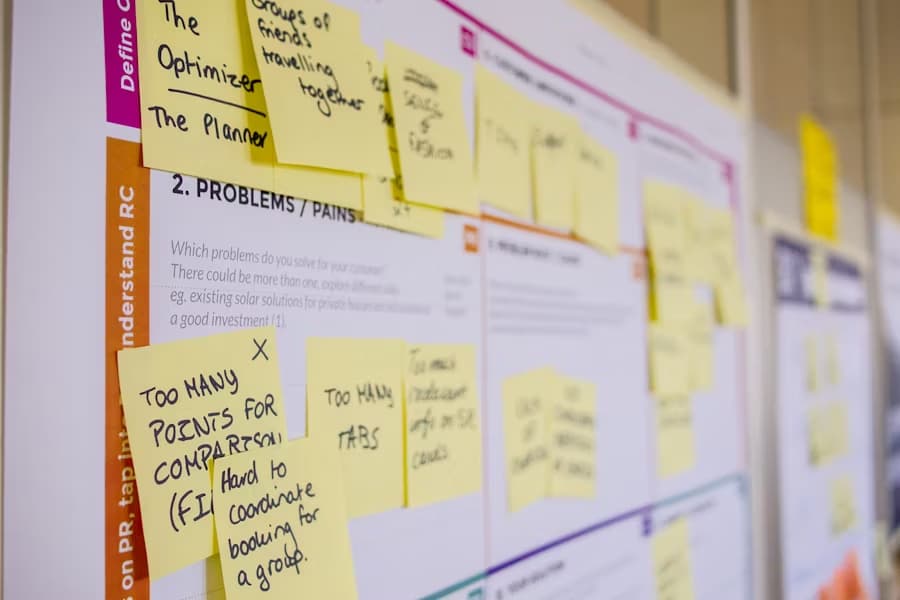“The essence of how we live our lives is encapsulated in the manner we utilize our days,” echoes the wisdom of Annie Dillard. Coupled with the realization that “The days are long, but the years are short,” one can’t help but confront a looming sense of urgency.
Questions arise about the efficiency of one’s daily routine and its alignment with personal and professional aspirations. This brings to light the importance of time management and its role in offering a structured approach to achieving one’s goals.
What about Goals for Time Management?
Defined as objectives set to enhance the efficiency of time utilization, time management goals empower individuals to prioritize tasks, establish deadlines, and eliminate inefficiencies in their daily activities. For instance, a business owner might allocate specific hours for client meetings, task delegation, and project assessments, ensuring a well-organized schedule. The SMART model offers a framework for setting these goals, emphasizing specificity, measurability, attainability, relevance, and timeliness.
Advantages of Time Management Goals
The implementation of time management goals yields numerous benefits, including a balanced work-life dynamic, reduced procrastination, heightened productivity, and the mitigation of burnout. This structured approach facilitates a clear delineation of daily tasks and objectives. By effectively managing one’s time, individuals can allocate adequate resources to both professional responsibilities and personal pursuits, ensuring neither area suffers from neglect.
This equilibrium fosters a healthier lifestyle, preventing the all-too-common pitfalls of work-related stress and personal dissatisfaction. Moreover, by prioritizing tasks based on their importance and deadlines, individuals can significantly reduce the tendency to procrastinate, leading to more efficient workdays and a sense of accomplishment. Increased productivity stems from this efficiency, as a well-organized schedule allows for a deeper focus on tasks, minimizing wasted time and effort.
Additionally, this methodical approach to managing tasks and responsibilities can greatly reduce feelings of overwhelm, which are often precursors to burnout. By setting and adhering to time management goals, individuals not only enhance their daily work performance but also contribute to their long-term well-being and career success, proving the immense value of a disciplined and thoughtful approach to time management.
Examples of Time Management Strategies: How to set Goals for Time Management?
- Set Defined Numeric Goals: Establishing clear, quantifiable objectives helps streamline task completion and teamwork. By defining specific targets, individuals and teams can focus their efforts on what truly matters, enhancing collaboration and efficiency. Tools like ClickUp facilitate this process by offering a platform to monitor these goals with precision, whether they relate to project milestones, sales targets, or personal achievements. This methodical approach not only clarifies expectations but also motivates all involved by providing tangible benchmarks for success;
- Daily Time Tracking: Understanding which activities consume the most time can illuminate areas for efficiency improvement. By meticulously recording how time is spent, one can identify patterns of productivity and procrastination, offering insights into potential adjustments. Time tracking tools are invaluable for this analysis, enabling users to pinpoint time-intensive tasks and evaluate the necessity of each activity. This awareness fosters a more intentional allocation of time, prioritizing tasks that align with one’s goals and minimizing those that do not contribute value;
- Task Prioritization: Adopting methods like “Eat the frog” ensures that critical tasks are addressed first, fostering progress towards overarching SMART goals. This strategy involves tackling the most challenging or important task of the day early on, thereby setting a productive tone for the rest of the day. Prioritizing tasks in this manner not only enhances efficiency but also alleviates the stress associated with looming deadlines or complex projects. By systematically addressing high-priority items, individuals can ensure steady advancement towards their goals, while also making room for unexpected demands on their time;
- Time-Blocking Techniques: Dividing the day into specific intervals for tasks can enhance focus and productivity. Techniques range from the Pomodoro method, which involves working for 25 minutes followed by a 5-minute break, to the 4-hour rule, focusing on a single task for four uninterrupted hours. This approach helps in creating a structured day where each task is given dedicated attention, minimizing multitasking and its detrimental effects on productivity. Time-blocking also allows for planned breaks that refresh the mind, making it easier to maintain concentration over longer periods. By allocating specific times for different activities, individuals can achieve a balanced workflow that accommodates both high-concentration tasks and necessary downtime;
- Delegating Tasks: Assigning tasks to team members or assistants can free up time for more critical activities, fostering team confidence and efficiency. Delegation is not merely about offloading work; it’s about recognizing the strengths of each team member and assigning tasks accordingly. This strategic division of labor allows for more specialized attention to each task, improving the quality of work and accelerating completion times. Moreover, it empowers team members by entrusting them with responsibilities, which can boost morale and encourage a culture of accountability and professional growth within the organization;
- Eliminating Distractions: Implementing measures to reduce interruptions can significantly enhance work focus and efficiency. This involves creating a workspace conducive to concentration, perhaps by using noise-canceling headphones, setting up physical barriers to reduce foot traffic, or employing digital tools that limit access to distracting websites and apps during work hours. By minimizing distractions, individuals can enter a state of deep work more easily, allowing for the completion of tasks in a shorter amount of time and with higher-quality output. Additionally, clear communication with colleagues about availability can help in setting boundaries that protect focused work time;
- Overcoming Procrastination: Breaking down complex tasks into manageable subtasks with specific timelines can help minimize procrastination. This strategy reduces the overwhelm associated with large projects by making them appear more approachable and achievable. Setting mini-deadlines for each subtask creates a series of small victories, maintaining momentum and motivation throughout the project. Furthermore, understanding the psychological triggers of procrastination can aid in developing personalized strategies to combat it, whether through reward systems, accountability partners, or simply altering the work environment to one that fosters productivity and minimizes the temptation to delay;
- Leveraging Visual Tools for Multitasking: Tools such as Gantt Charts and Kanban Boards can simplify the management of multiple projects and tasks. These visual tools offer a clear overview of task progress, deadlines, and dependencies, making it easier to identify bottlenecks and adjust priorities accordingly. By visually organizing tasks, team members can better navigate their workload, ensuring that no task is overlooked and that resources are allocated efficiently. This not only aids in multitasking but also enhances team collaboration by providing a common platform for tracking project progress;
- Streamlining Meetings: Optimizing meeting time through asynchronous updates and clear agendas can prevent time wastage. Establishing a practice of sending out agendas in advance allows participants to prepare or contribute asynchronously, potentially reducing the need for lengthy discussions. This method respects everyone’s time, ensuring that meetings are focused and productive. Moreover, summarizing key decisions and action items post-meeting can help maintain momentum and clarity, preventing the need for follow-up meetings that could have been avoided with better organization;
- Managing Deadlines: Effective planning and scheduling are crucial for meeting project deadlines efficiently. This involves not just setting deadlines but also understanding the scope of work and allocating resources accordingly. Regular check-ins and progress tracking can help identify potential delays early on, allowing for adjustments before they impact the project timeline. By adopting a proactive approach to deadline management, teams can ensure a smoother workflow and reduce the stress associated with last-minute rushes, ultimately leading to higher-quality outcomes;
- Establishing a Routine: A structured daily routine can enhance productivity and ensure a balance between work and personal life. Consistency in daily habits helps set the body’s internal clock, optimizing energy levels for various tasks throughout the day. A routine can include designated times for deep work, meetings, and breaks, as well as personal activities like exercise and family time. This structure helps in creating a predictable environment where focus can thrive, and work-life balance can be maintained, leading to improved well-being and job satisfaction;
- Automating Repetitive Tasks: Employing automation for mundane tasks can save time and allow focus on more important activities. Automation tools can handle repetitive duties such as data entry, email responses, and scheduling, freeing up valuable hours for strategic thinking and creativity. This shift not only increases productivity but also enhances job satisfaction by reducing the tedium associated with such tasks. Moreover, automation minimizes the risk of human error, ensuring a higher quality of work and consistency in outcomes, thereby contributing to overall efficiency and effectiveness;
- Taking Regular Breaks: Scheduled breaks are essential for maintaining productivity and preventing burnout. Integrating short, frequent pauses into the workday can help refresh the mind, boost creativity, and sustain concentration levels. These breaks are opportunities to step away from the desk, stretch, or engage in a brief activity unrelated to work, which can significantly enhance overall performance. Additionally, taking regular breaks is crucial for physical health, reducing the risk of strain and fatigue associated with prolonged periods of sitting or screen time;
- Learning to Say No: Setting boundaries protects one’s time and prioritizes essential tasks over additional requests. Mastering the art of saying no is vital for managing workload and stress levels. It involves evaluating new requests against current commitments and long-term goals and declining those that do not align. This skill not only safeguards one’s time for high-priority work but also fosters a culture of respect for personal and professional limits. Saying no, when necessary, can lead to more sustainable work practices and better mental health;
- Focusing on the Bigger Picture: Regularly stepping back to assess and plan for long-term objectives can provide clarity and direction. This practice encourages a strategic approach to work, helping to align daily tasks with overarching goals. Taking time to reflect on progress and adjust plans as necessary can ensure that efforts are concentrated on what truly matters, maximizing impact and satisfaction. Furthermore, this broader perspective can inspire innovation and motivation, as it highlights the purpose and potential impact of one’s work within a larger context.
In adopting these strategies, individuals and teams can achieve a more efficient and fulfilling use of their time, aligning daily actions with broader life and career goals.

Setting Time Management Goals to Achieve Success
Achieving consistency in managing one’s time is a challenge that many face, underscoring the reality that perfection is unattainable every single day. It’s important to acknowledge our human limitations and understand that it’s acceptable to have off days.
When feelings of being overwhelmed creep in, the strategy is to begin with the fundamentals. This involves establishing small, measurable objectives, organizing tasks by importance, assigning tasks to others, and designating definite periods for focused work.
Conclusion
Embracing a pragmatic approach towards time management by recognizing our human constraints paves the way for enhanced productivity and well-being. Initiating with manageable steps, such as setting achievable goals and prioritizing effectively, lays a solid foundation for long-term success. Through deliberate practice and a forgiving mindset, one can master the art of time management, turning aspirations into achievements and daily actions into lifelong habits.



